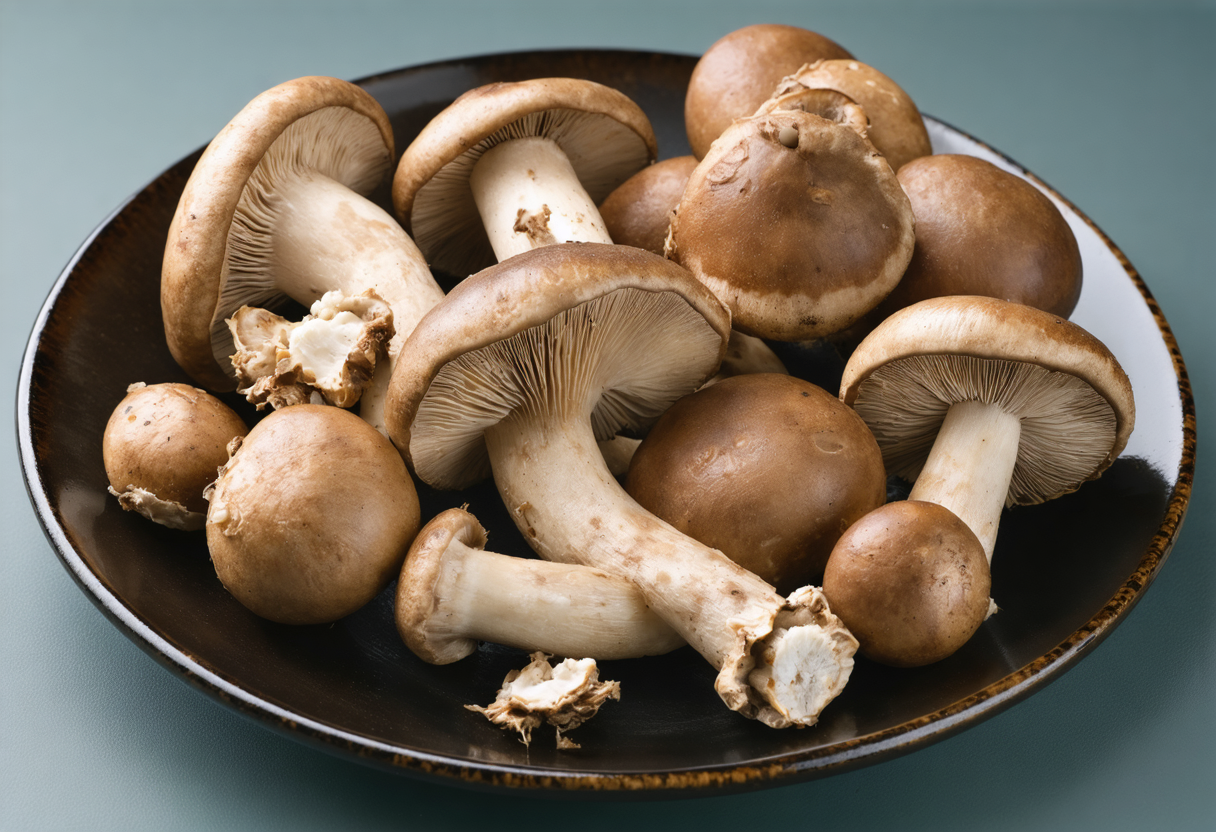
Ergothioneine—a mouthful, isn’t it? When I first heard about it, I was intrigued and wanted to dive deeper into what it does.
Ergothioneine is a naturally occurring antioxidant amino acid that protects cells from oxidative stress, supports immune function, and promotes overall health.
I thought I’d share what I’ve learned about this fascinating compound and how it might just be the unsung hero in our wellness journey.
What does ergothioneine do for the body?
Let’s start with the basics—what exactly does ergothioneine do for us?
Ergothioneine acts as a powerful antioxidant, protecting cells from damage, supporting immune health, and enhancing cellular functions throughout the body.

As I dug into the research, I discovered that ergothioneine is like a guardian angel for our cells. It scavenges harmful free radicals, reducing oxidative stress—which, as you might know, is linked to aging and various diseases. I remember chatting with a friend who’s a biochemist, and he likened ergothioneine to a meticulous housekeeper, tidying up the mess that daily life leaves behind in our bodies.
What’s fascinating is that our bodies have specific transporters designed just for ergothioneine, suggesting it’s something we really need. These transporters carry ergothioneine to places where oxidative stress is high, like the liver, kidneys, and brain. It’s almost as if our bodies know exactly where to send reinforcements.
Beyond antioxidant activity, ergothioneine supports the immune system. By protecting immune cells from damage, it helps them function optimally. In today’s world, who doesn’t want a little extra immune support?
I also read that it can aid in energy production at the cellular level. Imagine having a natural boost that helps your cells work more efficiently—that’s ergothioneine in action.
Overall, this amino acid plays multiple roles, from safeguarding cells to supporting vital bodily functions. It’s like a multi-tool in our wellness toolkit.
Is ergothioneine an anti-inflammatory?
Another question that popped into my mind was about its role in inflammation.
Yes, ergothioneine exhibits anti-inflammatory properties by modulating inflammatory pathways and reducing oxidative stress, which can lead to decreased inflammation in the body.

Inflammation is a hot topic these days—pun intended. When I think about inflammation, I picture it as a fire alarm in the body. Sometimes, the alarm is necessary, but other times it keeps blaring unnecessarily, causing more harm than good.
Ergothioneine seems to help in turning down that alarm. Studies have shown that it can inhibit certain inflammatory markers, helping to balance the body’s response. For instance, by reducing oxidative stress, it indirectly lowers the triggers that cause chronic inflammation.
I recall reading about people with joint issues finding relief when incorporating ergothioneine-rich foods into their diets. While more research is needed, the initial findings are promising.
It’s not just about joints, though. Inflammation is linked to heart health, brain health, and even aging. So, Ergothioneine’s potential anti-inflammatory effects could have wide-reaching benefits.
Again, it acts like a mediator, ensuring that inflammation serves its purpose without going overboard. In a way, it’s helping to maintain harmony within our bodies.
What food has the most ergothioneine?
Naturally, I wondered where we can get ergothioneine from our diet.
Mushrooms are the richest dietary source of ergothioneine, particularly varieties like king oyster, shiitake, and maitake mushrooms.

Turns out, mushrooms are like little treasure chests of ergothioneine. When I learned this, I started adding more mushrooms to my meals—not just for the taste but for the health benefits.
King oyster mushrooms top the list, but even common varieties like button mushrooms contain significant amounts. It’s fascinating that these fungi have such a unique compound that we can’t get much of from other foods.
I also read that the soil in which mushrooms grow can influence their ergothioneine content. This makes sense, considering that ergothioneine is synthesized by certain fungi and bacteria in the soil.
For those who aren’t fans of mushrooms, there are supplements available. But personally, I prefer getting nutrients from whole foods when possible. Plus, mushrooms add such a nice umami flavor to dishes.
Here’s a quick table of ergothioneine content in various mushrooms:
| Mushroom Type | Ergothioneine Content (mg/kg) |
|---|---|
| King Oyster | 13.3 |
| Shiitake | 12.2 |
| Maitake | 8.0 |
| Button | 7.0 |
Including mushrooms in your diet can be a delicious way to boost your ergothioneine intake.
Why is ergothioneine good for the brain?
But what about our minds? How does ergothioneine support brain health?
Ergothioneine supports brain health by protecting neurons from oxidative stress, potentially reducing the risk of neurodegenerative diseases and improving cognitive function.

As someone who sometimes forgets where I left my keys, brain health is definitely on my radar. Ergothioneine’s ability to cross the blood-brain barrier means it can directly influence our neural health.
Oxidative stress is a significant factor in neurodegenerative diseases like Alzheimer’s and Parkinson’s. By neutralizing free radicals in the brain, ergothioneine may help in slowing down or preventing the damage that leads to these conditions.
I came across a study where higher levels of ergothioneine in the diet were associated with better cognitive function in older adults. While it’s early days, it’s exciting to think that something as simple as eating more mushrooms could have a positive impact on our brains.
Moreover, ergothioneine might also support mitochondrial.function in neurons, which is crucial for energy production and overall cell health.
So, adding ergothioneine to our diet might just be a small step toward keeping our minds sharp as we age.
Is ergothioneine in lion’s mane?
Speaking of mushrooms, I was curious if lion’s mane, known for brain benefits, contains ergothioneine.
Yes, lion’s mane mushrooms contain ergothioneine, contributing to their antioxidant properties and potential cognitive health benefits.

Lion’s mane mushrooms have been gaining popularity for their potential to support nerve growth and cognitive function. When I found out they also contain ergothioneine, it was like connecting the dots.
Ergothioneine adds to the antioxidant profile of lion’s mane, complementing its unique compounds like hericenones and erinacines, which promote nerve growth factor synthesis.
I’ve tried lion’s mane tea before, and while the taste is mild, knowing it’s packed with beneficial compounds makes it more appealing.
Including lion’s mane in your diet could offer a dual benefit—ergothioneine’s antioxidant support along with lion’s mane’s neuroprotective properties.
It’s another example of how nature packs multiple benefits into a single food.
What is the richest source of ergothioneine?
So, what’s the ultimate source of ergothioneine?
The richest known source of ergothioneine is certain species of mushrooms, particularly king oyster mushrooms.

As we discussed earlier, king oyster mushrooms stand out as the top ergothioneine providers. Their high levels make them an excellent dietary addition for anyone looking to boost their antioxidant intake[^1].
Interestingly, other foods like black beans, oat bran, and some meats contain small amounts, but they pale in comparison to mushrooms.
I sometimes sauté king oyster mushrooms with a bit of garlic and olive oil—a simple dish that’s both tasty and nutritious.
For those who can’t access these mushrooms regularly, ergothioneine supplements derived from fermentation processes are available. Companies like ours at Santa Biotech produce high-purity ergothioneine through natural fermentation, ensuring it’s free from synthetic solvents and impurities.
It’s all about finding the best way to incorporate this beneficial compound into your lifestyle.
Conclusion
Ergothioneine might just be the unsung hero in our wellness journey—worth exploring, wouldn’t you say?

